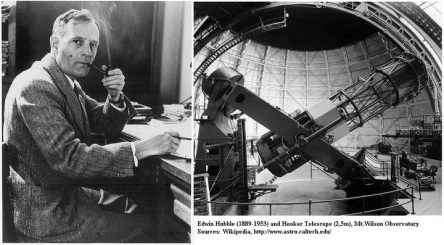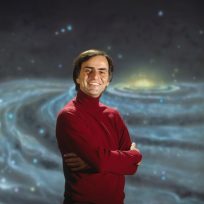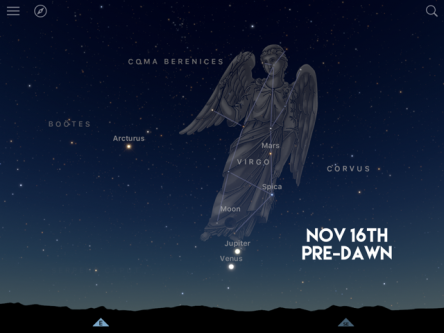
 • Nov 2nd – On this day in 1917, the Mount Wilson 100-inch telescope saw “first light”. First light is when a new telescope gets its first use gathering light from a distant celestial object for astronomical observation. From 1917 to 1949, this telescope, with its 100-inch mirror, was considered the largest in the world. Famous discoveries with the Mount Wilson telescope include the 1923 finding by Edwin Hubble that the Andromeda Galaxy lay outside our own, thereby doubling the size of the then known observable universe, Hubble and Milton Humason’s 1929 discovery that the universe is expanding, which led to the development of the “Big Bang Theory”, and observations made in the 1930’s that led astronomer Fritz Zwicky to discover evidence for “dark matter”.
• Nov 2nd – On this day in 1917, the Mount Wilson 100-inch telescope saw “first light”. First light is when a new telescope gets its first use gathering light from a distant celestial object for astronomical observation. From 1917 to 1949, this telescope, with its 100-inch mirror, was considered the largest in the world. Famous discoveries with the Mount Wilson telescope include the 1923 finding by Edwin Hubble that the Andromeda Galaxy lay outside our own, thereby doubling the size of the then known observable universe, Hubble and Milton Humason’s 1929 discovery that the universe is expanding, which led to the development of the “Big Bang Theory”, and observations made in the 1930’s that led astronomer Fritz Zwicky to discover evidence for “dark matter”.
• Nov 4 -Full moon occurs at 12:23 A.M. CDT.
• Nov 5 – Daylight Saving Time ends at 1:00 A.M. for much of the United States and Canada.
At 6:10 P.M. CST, the moon is at perigee, its closest to Earth for the month, at a distance of 224,587 miles.

• Nov 9 – Carl Sagan, astronomer, author, and science communicator was born this day in 1934.

• Nov 13 – At about 6:30 A.M., go outside and face east to see Venus and Jupiter only about ¼ degrees apart from one another. You may need binoculars to aid your observing.

• Nov 16 – Venus and Jupiter make a lovely pair in the pre-dawn sky with a waning crescent moon a few degrees above them.

Nov 17 – The Leonid Meteor Shower peaks in a moon-free sky right before dawn. Escape city lights and begin looking right after midnight. During the dawn hours you may see up to 20 meteor streaks per hour.
Nov 18 – New moon occurs at 5:42 A.M. CST.

Nov 19 – Apollo 12 makes the second lunar landing in 1969 with astronauts Pete Conrad and Alan Bean spending a little over 1 day and 7 hours on the lunar surface.
Nov 21 – At 12:53 P.M., the moon reaches apogee, its most distant point in its orbit from the Earth this month, at a distance of 252,358 miles away.
Nov 23 – Happy Thanksgiving!
Nov 26 – The moon is at first quarter at 11:03 P.M. CST.